
Four-dimensional coherent signalling – constellations and rotations
Magnus Karlsson
Photonics Laboratory, Department of Microtechnology and Nanoscience
Chalmers University of Technology, Gothenburg, Sweden
email: magnus.karlsson@chalmers.se
Paper Summary
Optical coherent transmission links utilize a four-
dimensional (4d) signal space. We review the search for
good modulation formats in 4d, as well the properties of
these formats under the (subset of all possible) 4d
rotations that occur during fiber transmission.
Introduction and definitions
Today’s coherent optical systems, as pioneered by Sun et
al. [1] modulate data on both quadratures on both
polarization components, which corresponds to a four-
dimensional signal space. The most common scheme of
modulation for these systems is to transmit four
independent and parallel channels of binary phase-shift
keying (BPSK) on the four quadratures, which is often
referred to as polarization-multiplexed quadrature PSK,
or PM-QPSK. This means that the signaling space is
four-dimensional (4d), and any set of signalling levels
can be described as a discrete point set in 4d, known as
the constellation, or modulation format.
An optical communication link needs amplifiers to
compensate the fiber attenuation, and each optical
amplifier adds noise to the signal. After coherent
detection the signal plus noise is converted to the
electrical domain and sampled to a sequence of discrete
symbols with additive white Gaussian noise (AWGN). In
the simplest model of a coherent link, the received 4d
symbol is thus the transmitted symbol, plus an added 4d
noise sample, independent in each quadrature (or
coordinate). Thus, given a received 4d symbol, the
receiver needs to decide which of the transmitted
symbols that is closest to the received one. This is
commonly referred to as maximum likelihood (ML)
detection.
For ML detection the symbol error probability will equal
the probability of a received symbol being closer to
another symbol than the transmitted one. In the limit of
high signal to noise ratio (SNR), this probability depends
on the ratio of the noise variance and the minimum
distance, dmin, between any two points in the
constellation. For the same, asymptotically high SNR, a
constellation will then have an asymptotic power
efficiency, APE, γ=dmin/(4Eb), that says how much higher
SNR relative to QPSK is needed to have the same SER.
Here Eb is the average energy per bit, and for M
constellation points it equals Es/log2(M), where Es is the
symbol energy, geometrically equal to the square
distance from the origin, averaged over all M
constellation points. The APE is a strictly geometrical
quantity that is useful to compare constellations. It
reflects the inherent trade-off in constellation design,
which aims for a high dmin and a low Es.
The other important property of a constellation is the
spectral efficiency, SE, that simply states how many bits
per second that is transmitted per unit bandwidth. For a
constellation with M points in N-dimensional space this
is commonly defined as SE=log2(M)/(N/2). This defines
the SE in units of bits per symbol per polarization.
In order to compare the performance of various
modulation schemes, one then has to weigh in both the
SE and the power efficiency g. In the following we will
perform such a comparison. We will end with a
description on how these formats are changed during the
transmission in the fiber. The influence of losses and
amplification will result in additive noise, but in addition
to this the transmission link will perform an unknown
and random polarization change, as well as an absolute
phase change due to the phase wander between the
signal laser and the receiver local oscillator. Both these
effects can be described as rotations of the four-
dimensional signalling space, and any such rotation need
to be undone by the receiver for the signal to be detected
without ambiguities. This tutorial will describe, in
geometrical terms, the quest for efficient 4d modulation
formats as well as the 4d rotations and ambiguities these
formats will have.
Four-dimensional modulation
The most straightforward 4d modulation format is to
transmit independent BPSK in each of the four
qudratures, or equivalently, independent QPSK in each
of the two polarization states. This was the first realized
coherent transmission format in modern, DSP-based,
coherent detection systems [1], and it transmits 4 bits per
4d symbol, or 2 bits per symbol per polarization. It is
referred to as PM-QPSK, has an SE of 2, and γ=1. In 4d
it spans a hypercube, with 16 vertices, given by the set of
4d vectors C1={(±1,±1,±1,±1)/2}, taken with all sign
changes. The question is then whether one can realize a
better (more power efficient) format than this. By using
sphere packing simulations we showed that, indeed this
is possible, for example the constellation
C2={(±1,±1,0,0),(0,0,±1,±1)} taken with all sign
selections consists of 8 levels and has γ= 3/2=1.76 dB
better sensitivity than PM-QPSK. It can be interpreted as
QPSK in either of the x or y polarization, and is referred
to as polarization-switched QPSK, PS-QPSK [2]. By
using sphere packing simulations one can find the best
modulation format for every single value of the number

of levels M, and that reveals that indeed, PS-QPSK is the
most power efficient format of all possible 4d
constellations [2,3]. In Fig. 1, the SE vs. sensitivity
penalty to formats discussed here is summarized. It was
first experimentally realized in [4], and then investigated
by many other groups in different contexts [5,6,7]. In [7]
an integrated optical modulator, tailored for PS-QPSK,
was developed. The simulations also revealed the format
C(4,16), visualized in Fig. 2, which is the best packing of
16 points in 4d, having a γ=1.11 dB [8,9]. Starting from
the PM-QPSK format (the 4d hypercube) one can
actually add 9 more points without decreasing dmin or
increasing Es. The resulting 25-point format, C(4,25), is
the so-called 24-cell, plus the zero symbol (0,0,0,0). The
24 outer points have been realized in the Pol-QAM
format [3,10,11], which has around 0.7 dB better
asymptotic sensitivity than QPSK.
A nice hierarchy of formats are the set-partitioning (SP)
formats [12,13], obtainable by removing every second
constellation point from regular 4d QAM constellations,
or alternatively, by interleaving two QAM formats. For
example if PM-16QAM (with M=256) is set-partitioned,
the SP-128-QAM format arises, or if PM-QPSK is set
partioned one obtains PS-QPSK. If two PM-QPSK
constellations are interleaved, the SP-32-QAM format
results. All SP-QAM formats have better sensitivity than
the regular QAM constellations, which is due to being a
subset of the D4-lattice, which is a regular structure of
points known to produce the best sphere packings in 4d.
The SP-128-SP-QAM formats have been analyzed
theoretically in [14] and experimentally in [15-18].
In most cases the novel 4d formats requires slightly
different coherent DSP algorithms for polarization and
phase tracking, relative to PM-QPSK. Examples of
polarization tracking schemes for PS-QPSK are
discussed in [6,19]. In general, however the
modifications are not significant, and the DSP
complexity for the regular 4d formats are comparable to
the standard regular QAM formats.
Finally it should be emphasized that many of the
proposed 4d formats have simple interpretations in terms
of coding. For example, the PS-QPSK and the SP-128-
QAM formats can be obtained by a simple parity check
code from PM-QPSK and PM-16QAM, respectively
[16,20]. In higher than 4 dimensions, formats obtained
from well-known forward error correction (FEC) codes.
Alternatively, a direct application of an advanced FEC
on a non-optimized format may prove as attractive, and
this reflects the always-not-so-clear distinction between
a modulation format and an FEC code. However there
are applications where use of conventional FEC is
unwanted, and the use of power-efficient modulation
attractive. Links were latency must be limited, or where
DSP complexity must be reduced for power saving
reasons are examples. Blind channel estimators, or FEC
frame detectors where large modulation level separation
before the FEC decoder is required, are other examples
where these power efficient formats may be valuable.
Four-dimensional rotations – an alternative
polarization calculus
In order to describe the transmission of coherent 4d
signals through the fiber channel a 2d complex Jones
vector for signal and a complex 2x2 matrix for the
transfer matrix is common [21]. In absence of
polarization dependent losses, the transfer matrix will be
unitary, meaning its inverse is its conjugate transpose.
The 2x2 unitary matrices have 4 degrees of freedom
(DOFs), where one models absolute phase changes and 3
models polarization state changes. These usually require
different tracking speed in coherent receivers; the phase
jitter being on microseconds and polarization drifts on
ï ï ï ï 0 5
0
0.5
5
30ïï36.
30ïï4$0
ï63ï4$0
ï63ï4$0
ï63ï4$0
30ï436.
36ï436.
&
3RO4$0
2d-formats
4d-formats
&
6HQVLWLYLW\SHQDOW\a>G%@
6SHFHII>ELWV\PEROSRO@
Fig. 1. Spectral efficiency vs sensitivity of some studied 4-dimensional formats. The 2d formats (blue, purple) have less SE and
are less power efficient than the 4d formats (green, black).
Fig. 2. Two projections of the C(4,16) constellation. All lines
connect nearest neighbours and have unit length.

millisecond time scales. To comply with signal space
and detection algorithms, we suggest a reformulation of
signal as a real 4d vector of the form of the column
vector as E = [Re(Ex),Im(Ex),Re(Ey),Im(Ey)]t, where Ex,y
denotes the signal field polarization components. Fiber
transmission can then be expressed with the input-output
matrix relation Eout=R Ein, where R denotes a 4x4 real
rotation matrix. It turns out that the set of 4x4 real
rotations is richer than the set of 2x2 unitary
transformations, in that it has 6 DOFs. So what does
these extra DOFs correspond to?
In [22], we addressed this question, and showed that 4d
rotations can be parameterized into two commuting
subgroups, right-isoclinic (RI) and left-isoclinic (LI),
with 3 DOFs each. This is attractive from a polarization
calculus point of view, as the 3 RI DOFs can be directly
identified with the Poincaré sphere rotation axes. Of the
three DOFs for the LI rotations, the first is identified as
the absolute phase rotation (which does not affect the
polarizations states on the Poincaré sphere), and the
remaining two DOFs correspond to non-physical
rotations, i.e., rotations that cannot occur for propagating
photons.
Even if the non-physical rotations cannot arise during
transmission, they can be synthesized in DSP, and when
applied to the well-known formats like PM-QPSK or PS-
QPSK, a very interesting effect arises. While the
physical rotations maintain the difference between
absolute phase states and polarization states in these
constellations, this can be altered by the non-physical
rotations. An example with PM-QPSK is shown in Fig.
2. Regular PM-QPSK (constellation C1) is shown with
triangles, and can be seen to occupy four polarization
states on the Poincaré sphere, and four absolute phase
states in the constellation diagrams. One can say that the
16 constellation points of PM-QPSK can be partitioned
in four polarization states, each with a four-fold phase
degeneracy (or vice versa). Now, after applying a small
non-physical rotation, the constellation points marked
with circles in Fig 2 arise. We can see that this
representation of the hypercube has 8 different
polarization states, each with a 2-fold phase degeneracy
(which correspond to a sign difference). In other words,
the non-physical rotations can alter the polarization-
phase content of modulation formats. It allows us to
project PM-QPSK as either four polarization states with
four phases, or eight polarization states with 2 phases
each. This is not possible within the conventional 2x2
Jones matrix formulation. A similar analysis can be done
for PS-QPSK; being conventionally seen as 2
polarization states with four phases, a non-physical
rotation can transform it into a four-polarization, binary-
phase format. This might have practical importance since
polarization drifts are usually easier to track than the
more rapidly varying phase jitter. Moreover, by being
rotations, they do not alter any relevant properties of the
formats, such as spectral efficiency or sensitivity.
However, to utilize this the non-physical rotations for
improving coherent receiver performance would require
development of new phase- and polarization tracking
schemes.
I would like to acknowledge discussions and help from
Colin McKinstrie, Erik Agrell, Martin Sjödin, Pontus
Johannisson, Tobias Eriksson and other researchers at
the Chalmers FORCE center.
References
1. H. Sun et al., Opt. Exp. 16 (2008) p.873
2. M. Karlsson and E. Agrell Opt. Exp. 17 (2009) p.10814
3. E. Agrell and M. Karlsson, J. Lightwave Technol. 27
(2009) p. 5115
4. M. Sjödin et al., Opt. Exp. 19 (2011), p.7839
5. L. E. Nelson et al., Opt. Exp. 19 (2011), p.10849
6. J. Renaudier et al., J. Lightwave Technol. 30 (2012)
p.1312
7. H. Yamazaki et al., OFC (2012), p. PDP5A.8
8. M. Karlsson and E. Agrell, ECOC 2010, p. We.8.C.3
9. J. Karout et al., OFC (2013), p. OW3B.4
10. H. Bülow, OFC (2009), p. OWG.2
11. J. K. Fischer et al., Opt. Exp. 20 (2012), p. B232
12. L. Coelho and N. Hanik, ECOC (2011), p. Mo.2.B.4
13. M. Karlsson and E. Agrell, OFC (2011), p. OTu2C.1
14. M. Sjödin et al., Opt. Exp. 20 (2012), p. 8356
15. T. Eriksson et al., OFC (2013), p. OTu2C.1
16. H. Zhang et al., OFC (2013), p. PDP5A.6
17. J. Renaudier et al., OFC (2013), p. OTu3B.1
18. R. van Uden et al., OFC (2014), p. W4J.4
19. P. Johannisson et al., Opt. Exp. 19 (2011) p.7734
20. B. Krongold et al., IEEE Photon. Technol. Lett. 24, (2012)
p.203
21. S. Betti et al., J. Lightwave Technol. 9 (1991) p. 514
22. M. Karlsson, J. Lightwave Technol. 32 (2014) p.1246
Stokes vectors
s1
s2
s3
-1
-0.5
0
0.5
1
-1
-0.5
0
0.5
1
-1
-0.5
0
0.5
1
X-pol
real
imag
-1 -0.5 0 0.5 1
-1
-0.5
0
0.5
1
Y-pol
real
imag
-1 -0.5 0 0.5 1
-1
-0.5
0
0.5
1
Fig. 3. Stokes vectors and constellations of PM-QPSK
(triangles). The circles show the PM-QPSK constellation after
a non-physical 4d rotation, with colors refering to the same
constellation points. From [22].

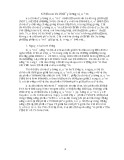
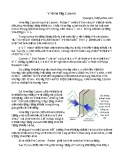
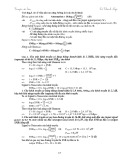
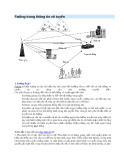
![Kỹ thuật ghi hình: Các bộ nhớ số liệu [chuẩn nhất]](https://cdn.tailieu.vn/images/document/thumbnail/2014/20140514/phuongpro30091993/135x160/1678330_1410.jpg)
![Bộ Nhớ Bán Dẫn: Các Thuật Ngữ và Kiến Thức Quan Trọng [CHƯƠNG 9]](https://cdn.tailieu.vn/images/document/thumbnail/2012/20121209/bacuong2205/135x160/3671355109178.jpg)

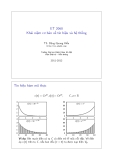
![Giáo trình kỹ thuật số - Chương 8 ( Chủ biên Võ Thanh Ân ): [Thông tin chi tiết/Hướng dẫn/Tài liệu]](https://cdn.tailieu.vn/images/document/thumbnail/2011/20111110/meogiay/135x160/ky_thuat_so_c8_2262.jpg)
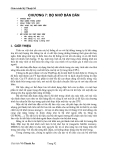

![Trắc nghiệm Mạch điện: Tổng hợp câu hỏi và bài tập [năm hiện tại]](https://cdn.tailieu.vn/images/document/thumbnail/2025/20251118/trungkiendt9/135x160/61371763448593.jpg)













